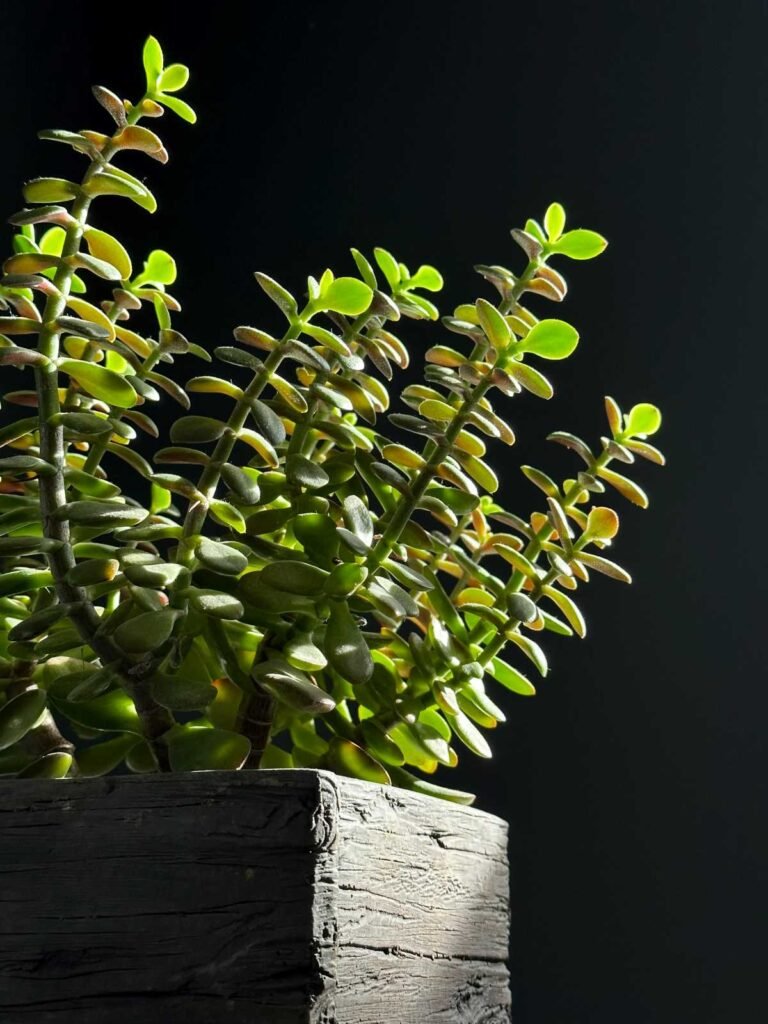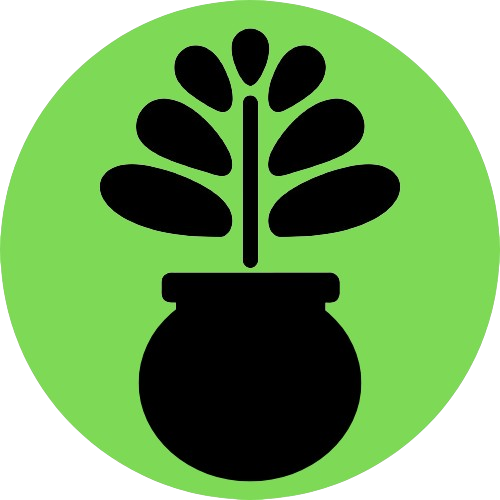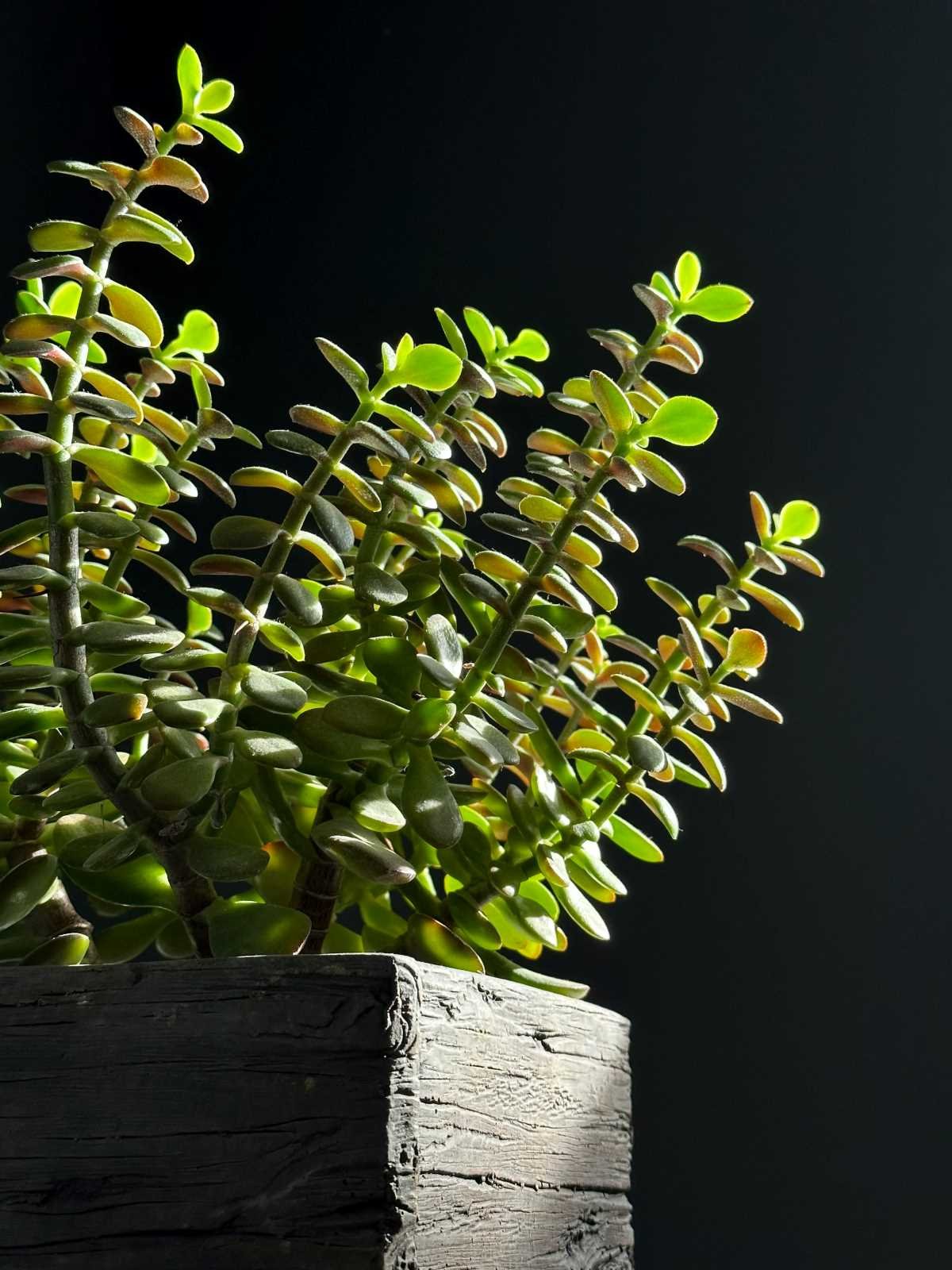The jade plant, scientifically known as Crassula ovata, is a succulent species native to South Africa and Mozambique. Renowned for its thick, fleshy leaves and sturdy, tree-like structure, the jade plant has become a favorite among houseplant enthusiasts around the globe. Its aesthetic appeal, characterized by glossy, oval-shaped leaves and a robust trunk, makes it an attractive addition to any indoor space. The jade plant’s ability to thrive in various conditions and its low maintenance requirements further enhance its popularity as a houseplant.
In addition to its visual charm, the jade plant has garnered attention for its potential health and well-being benefits. Often referred to as the “money plant” or “friendship tree,” it is believed to bring good fortune and positive energy into the home. The plant’s slow growth and longevity also symbolize perseverance and prosperity, making it a meaningful gift for friends and family.
With its resilience and distinct beauty, the jade plant not only serves as an ornamental piece but also contributes to a serene and inviting atmosphere. As we delve deeper into this blog post, we will explore the myriad benefits of having a jade plant in your home, from its air-purifying qualities to its potential impact on mental well-being. Understanding these advantages will provide a comprehensive appreciation for why the jade plant is a valuable addition to any household.

Table of Contents
Air Purification
Jade plants, also known as Crassula ovata, are not only aesthetically pleasing but also contribute significantly to air purification. These succulents are adept at absorbing carbon dioxide and releasing oxygen, a natural process that enhances indoor air quality. Photosynthesis, the process by which jade plants convert light energy into chemical energy, plays a crucial role in this air purification mechanism.
During photosynthesis, jade plants absorb carbon dioxide (CO2) from the air through their leaves. This CO2 is then combined with water to produce glucose and oxygen. The oxygen is released back into the air, enriching the indoor environment with fresh, breathable air. This continuous cycle of absorbing carbon dioxide and releasing oxygen helps to maintain a balanced and healthy indoor atmosphere.
Research has shown that jade plants can also help reduce specific toxins and pollutants. According to studies conducted by NASA, certain indoor plants, including jade plants, have the ability to absorb volatile organic compounds (VOCs) such as benzene, formaldehyde, and toluene. These VOCs are commonly found in household products, paints, and synthetic materials and can negatively impact indoor air quality. By mitigating these pollutants, jade plants contribute to a cleaner and healthier living space.
Moreover, jade plants are relatively low-maintenance, making them an excellent choice for improving indoor air quality effortlessly. Their ability to thrive in various light conditions and minimal watering requirements make them a practical addition to any home. By integrating jade plants into your living space, you can enjoy the dual benefits of aesthetic appeal and enhanced air quality, promoting a healthier and more vibrant indoor environment.
Low Maintenance and Durability
Jade plants are renowned for their low maintenance and durability, making them an excellent choice for individuals who lead busy lives or lack extensive gardening experience. One of the primary reasons jade plants are so popular is their hardy nature. These resilient succulents can thrive in a variety of indoor conditions, requiring minimal attention to flourish.
One of the key characteristics that make jade plants easy to care for is their drought-resistant nature. Unlike many other houseplants that require frequent watering, jade plants can store water in their thick, fleshy leaves. This adaptation allows them to endure periods of neglect without suffering significant damage. A general rule of thumb is to water the jade plant only when the top inch of soil feels dry to the touch. Over-watering can lead to root rot, so it’s crucial to allow the soil to dry out between waterings.
In terms of light requirements, jade plants prefer bright, indirect sunlight. They can tolerate lower light conditions, but their growth may become slower and less robust. Placing the jade plant near a south-facing window can provide an optimal environment, ensuring it receives ample light without direct exposure to harsh rays. However, jade plants are quite adaptable and can still thrive in less-than-ideal lighting situations.
Temperature and humidity are also factors that jade plants can easily adapt to. They do well in typical household temperatures ranging from 65°F to 75°F (18°C to 24°C). While they are not particularly fussy about humidity levels, it’s best to avoid placing them in overly humid environments to prevent potential fungal issues.
Basic care for jade plants involves occasional pruning to remove any dead or leggy growth, which helps maintain their attractive appearance. Additionally, repotting every couple of years can ensure the plant has enough space to grow and access to fresh soil.
Overall, the jade plant’s low maintenance and durability make it a perfect addition to any home, providing beauty and greenery with minimal effort.
Feng Shui and Positive Energy
In the practice of Feng Shui, jade plants hold a special place due to their association with prosperity, good luck, and positive energy. Feng Shui, an ancient Chinese art of harmonizing individuals with their surrounding environment, emphasizes the strategic placement of objects to balance energy, or “chi.” The jade plant, with its lush, rounded leaves resembling coins, is believed to be a powerful symbol of wealth and success.
According to Feng Shui principles, placing a jade plant in specific areas of your home can significantly enhance the flow of positive energy. The southeast corner of a home or office, known as the “wealth corner,” is considered an ideal spot for a jade plant. This placement is thought to attract financial luck and abundance. Additionally, placing a jade plant near the entrance of your home can invite prosperity and positivity into your life as it is believed to welcome good fortune.
Further cultural beliefs and anecdotes about jade plants add to their allure. In Chinese culture, jade plants are often given as housewarming gifts to wish the recipients good luck and prosperity in their new home. The plant’s resilience and longevity also symbolize enduring prosperity, making it a cherished addition to households and workplaces alike. Legends suggest that the energy emitted by jade plants can improve relationships and foster a harmonious living environment, thereby contributing to overall well-being.
Incorporating a jade plant into your space, according to Feng Shui, can be a simple yet effective way to cultivate a more prosperous and harmonious atmosphere. Whether you are a firm believer in Feng Shui or simply appreciate the aesthetic and symbolic value of jade plants, their presence is sure to enhance the positive energy within your home.
Health Benefits
Jade plants, known scientifically as Crassula ovata, are not just aesthetically pleasing additions to home decor but also offer a range of health benefits. One of the most notable advantages is their ability to reduce stress. Studies show that having greenery in living spaces can significantly lower stress levels. In particular, the jade plant, with its lush green leaves and calming presence, can create a serene environment that promotes relaxation and mental well-being.
Moreover, jade plants can improve indoor air quality. They are effective at increasing humidity levels, which is particularly beneficial in dry environments. Higher humidity can alleviate respiratory issues, reduce skin dryness, and even decrease the likelihood of colds and flu. This natural humidifying ability makes jade plants an excellent choice for enhancing indoor air quality and overall health.
In addition to these benefits, there is some scientific backing for the positive impact of jade plants on mental well-being. The presence of plants in indoor spaces has been linked to improved mood and cognitive function. A study published in the Journal of Physiological Anthropology found that interaction with indoor plants can reduce physiological and psychological stress. While the study did not specifically target jade plants, the general principle applies to most indoor greenery.
Experts in the field of psychology and horticulture agree on the therapeutic effects of plants. For example, Dr. Roger S. Ulrich, a well-known researcher in the field of environmental psychology, has demonstrated through various studies that natural elements like plants can significantly improve emotional states and increase feelings of well-being. Jade plants, with their robust and hardy nature, are an excellent choice for bringing these benefits into your home without requiring extensive care.
Aesthetic and Decorative Appeal
The jade plant, celebrated for its aesthetic appeal, is a popular choice for enhancing the visual charm of any space. Its unique, sturdy leaves, which are typically round and fleshy, create a fascinating texture that stands out in both minimalist and elaborate interior designs. The vibrant green color of the leaves adds a touch of freshness and vitality, making any room feel more lively and inviting.
When considering how to incorporate jade plants into your home decor, the options are plentiful. One can choose from a variety of potting options to complement different styles. For a modern and sleek look, consider using white ceramic pots or minimalistic terracotta pots. For a more rustic or bohemian feel, woven baskets or vintage containers can be an excellent choice. The jade plant’s versatility in potting options means it can easily fit into any decorative theme.
Placement is also key to maximizing the aesthetic benefits of jade plants. These plants thrive in well-lit areas, so positioning them near windows or in brightly lit rooms not only ensures their health but also highlights their beauty. Jade plants can serve as stunning centerpieces on dining tables or coffee tables. They also make excellent additions to bookshelves, side tables, and desks, effortlessly adding a touch of greenery to different parts of your home.
For a more dramatic effect, consider grouping several jade plants of varying sizes together. This creates a lush, green focal point that can transform a dull corner into a vibrant oasis. Additionally, jade plants can be integrated into hanging planters, allowing you to utilize vertical space and add layers to your interior design.
Overall, the jade plant’s unique appearance and versatile placement options make it an ideal choice for anyone looking to enhance their home’s aesthetic with a touch of nature. Its sturdy leaves and vibrant green color bring a sense of tranquility and style, making it a perfect addition to any decor.
Propagation and Sharing
One of the most appealing aspects of jade plants is their remarkable ease of propagation. This characteristic allows plant enthusiasts to grow new jade plants from cuttings, making it both a fulfilling and cost-effective method to expand their plant collection. Propagating jade plants can be accomplished with a few simple steps, ensuring even novice gardeners can succeed.
To begin the propagation process, select a healthy stem from the parent jade plant. Using a clean, sharp knife or pair of scissors, cut a segment that is about three to five inches long. It’s essential to allow the cutting to dry and form a callus over the cut end before planting. This step typically takes several days and helps prevent rot when the cutting is placed in soil.
Once the callus has formed, prepare a small pot with well-draining soil, such as a cactus or succulent mix. Gently insert the cutting into the soil, burying it about one to two inches deep. Lightly water the soil to moisten it, but be cautious not to overwater, as jade plants prefer a relatively dry environment. Place the pot in a location with indirect sunlight and maintain a consistent watering schedule, allowing the soil to dry out between waterings.
In a few weeks, roots will begin to develop, and new growth will appear, signaling a successful propagation. At this stage, the cutting can be treated as a mature jade plant, requiring minimal care and attention to thrive.
Sharing jade plants with friends and family can be immensely rewarding. Not only does it promote a sense of community and connection, but it also offers an opportunity to spread the joy of gardening. Additionally, propagating and sharing jade plants is a sustainable and cost-effective way to enhance one’s indoor garden without the need for purchasing new plants.
In summary, the ease of propagating jade plants makes them an excellent choice for both experienced and novice gardeners. By following a few straightforward steps, anyone can cultivate new jade plants, share them with loved ones, and enjoy the numerous benefits these hardy and beautiful plants offer.
Also read, Jade Plant Disadvantages: Everything You Have to Know.
Conclusion: Bringing Jade Plants into Your Home
Jade plants offer numerous benefits that make them exceptional additions to any home. Their ability to purify air by removing toxins contributes to a healthier living environment. The low maintenance nature of jade plants makes them ideal for both novice and experienced gardeners; they require minimal watering and thrive in a variety of lighting conditions.
Additionally, jade plants are often associated with positive energy and good luck, making them a popular choice for promoting a harmonious and prosperous atmosphere. Their aesthetic appeal, with their glossy, succulent leaves and compact form, enhances the decorative quality of any indoor space.
Considering these advantages, adding a jade plant to your home can significantly improve both your physical surroundings and your overall well-being. We encourage you to explore local nurseries or plant shops to discover the perfect jade plant that suits your home and lifestyle. Embrace the benefits of jade plants and enjoy the positive impact they bring to your living space.

